| Manufacturer: | Quest  |
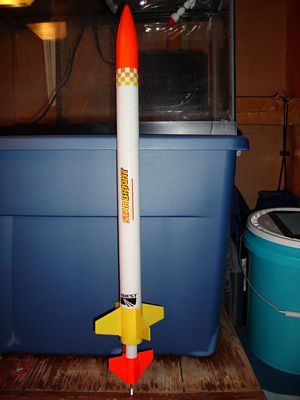
Brief:
The StarBright is a kit-bash of two single stage kits into one 2-stage rocket. The kits used were the Quest StarHawk
and Quest BrightHawk. The Starhawk was used for the booster and Brighthawk for the sustainer. The booster uses tumble
recovery and the sustainer has a parachute.
Modifications:
I built the Brighthawk mostly stock. The only think I changed was the motor mount. I recessed the bottom centering
3/4" from the bottom of the motor tube and a 1/4" piece of the Starhawk tube just below the ring. I also left
out the engine hook. I recessed the motor mount enough so the bottom of the installed motor would be even with the
bottom of the body tube.
Construction:
The Brighthawk kit has one 1.378" x 17.25" body tube, a plastic nose cone, plastic 4-fin fin can, 2
cardboard centering rings, Kevlar®
cord, elastic cord, a 12" plastic chute, an 18mm motor mount tube, engine block, and engine hook.
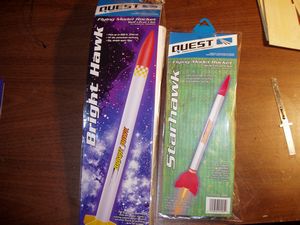

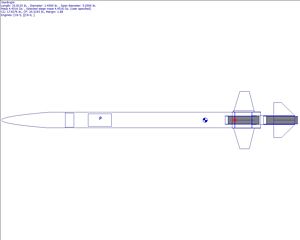

The Starhawk kit contained one 0.787" body tube, plastic nose cone, plastic 4-fin fin can, a streamer, Kevlar® cord, elastic cord, an 18mm motor tube, engine block, and engine hook. The body tube was slightly bigger than a BT-20, which made a perfect fit for sliding over an 18mm motor mount tube.
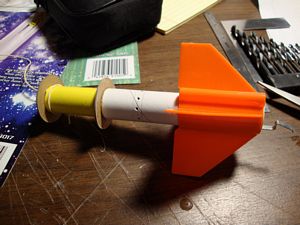
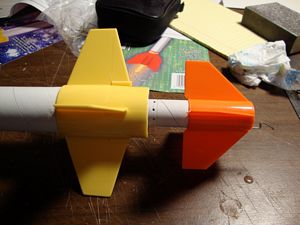
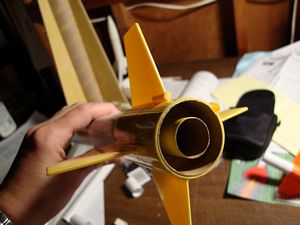
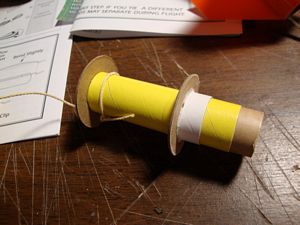
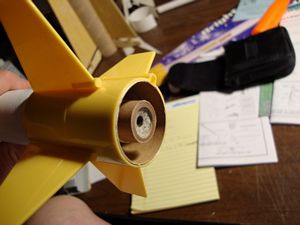
Finishing:
The PRO about finishing is it's very quick and easy unless you want to paint. I used the white tubes as they were and
applied the stick on decals. I used part of each rockets decal to spell StarBright. The whole thing can be built and
finished in one sitting.
CONs: none.
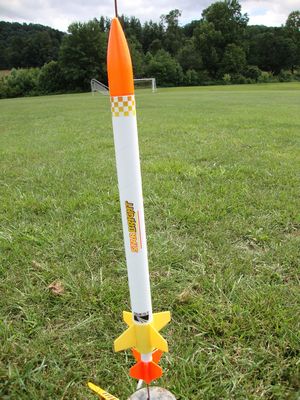
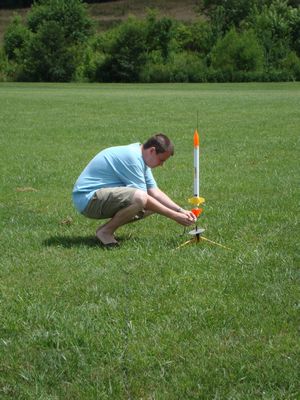
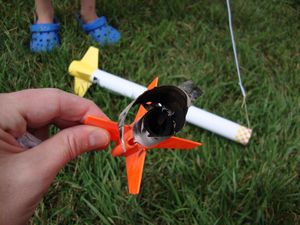 Flight:
Flight:
The first flight was unstable. I used a B6-0 booster and A8-3 sustainer. For some reason the rocket cocked over to
the left under booster power. It was almost sideways when the sustainer motor lit. The booster section was burned. I'm
not 100% sure what happened. I noticed that the unburned part of the booster tube along the vent holes was creased.
This could have been a weak point. Also, after double checking the CP/CG relationship with both motors loaded(after
fixing), it was marginally stable.
For the first version (damaged after first flight) of the Starhawk booster, I inverted the fin can, left out the recovery system and nose cone, and cut the body tube down to 3.75 inches. I determined where the gap would be between the booster motor block and bottom of the sustainer motor. I used a large needle to poke holes along this gap around the circumference of the booster tube.
The top of the booster tube slid over the bottom of the sustainer motor tube.
After the first flight, the Starhawk booster was damaged. It was mostly burned just above the engine block. The remaining piece had a crease at the point of the gap holes. I rebuilt that part with some of the leftover Starhawk body tube. I reinforced it with another piece which was slit lengthwise and covered the tube like a sleeve. I painted the outside sleeve with 30 minute epoxy and coated the inside with thin CA. This added strength and made the tube more burn resistant. I also made only two vent holes instead of several.
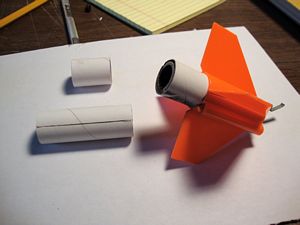
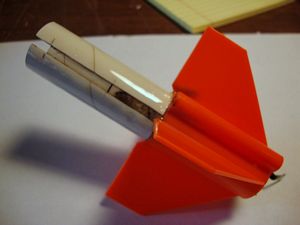
After rebuilding, reinforcing the booster, and adding some nose weight, I tried again. The second flight was powered with a B6-0 and B6-4. Everything worked great, and the booster wasn't damaged. The third flight was on a C6-0 to an A8-3. This flight was also perfect.
Recovery:
The 14" plastic chute that came with the Brighthawk was made of cheap material but was sufficient. The tumble
recovery used by the booster was fine.
Summary:
The individual kits used were inexpensive and easy to build. With all the motor configuration choices, you could fly
it from 400' to 1400', which makes it suitable for small and larger fields.
 |
 |